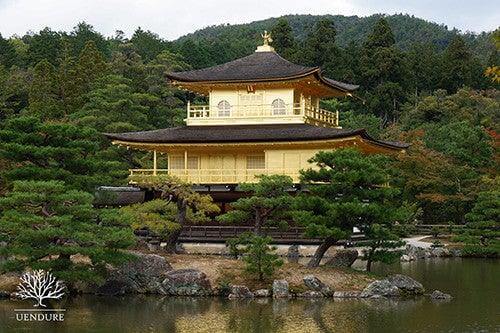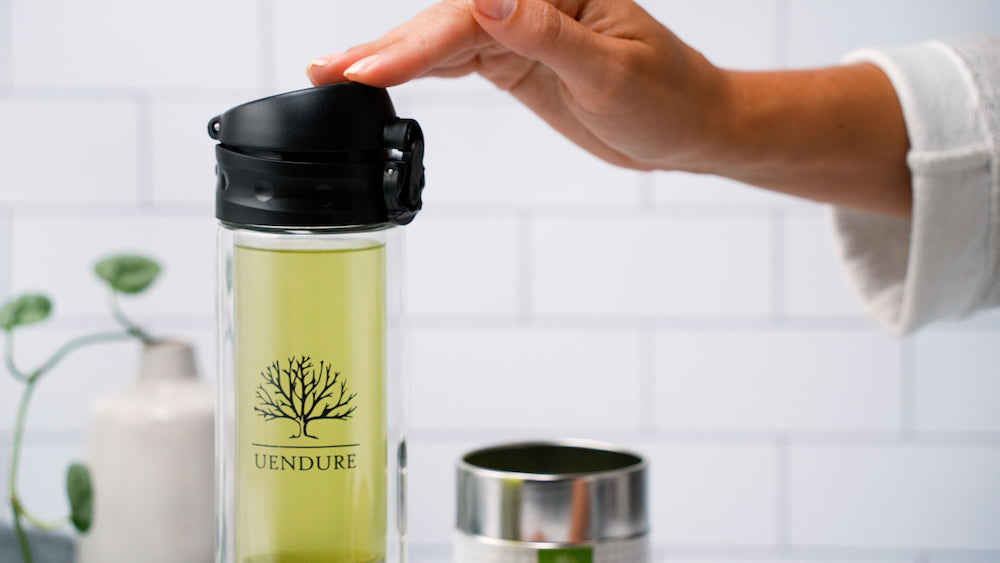Save 15% when you buy the Original Bottle Bundle!

20 Popular Japanese Teas
Japan has centuries of history with the humble tea leaf. The country produces hundreds of varieties and grades of tea based on a variety of growing and processing situations. Tea grown in the shade, steam-pressed, pan-fired or sun-dried. Tea from all parts of the plant including the buds, leaves, tips, sticks or stems. Tea that been powdered or curled into a ball. Tea that's combined with rice or kelp. Tea that's harvested on a particular date.
It's not only about the tea. Tea is a lively and large aspect of Japanese culture. For example, Japanese Tea Ceremony transforms the preparation, serving, and consumption of tea into a form of living art.
The following reference provides a brief overview of twenty of the more common varieties of Japanese tea.
Ryokucha
Ryokucha is a generic Japanese word for green tea. Most Japanese teas are some variation of ryokucha. In Japan, green tea is often called ocha (tea) or nihoncha (Japanese tea).
Shop our collection of green teas
Yamecha
Tea from the Yame region of Fukuoka Prefecture known for its high quality
Ujicha
Another regional variety from the Uji area of Kyoto. Tea has been produced there for more than 400 years.
Aracha
Aracha is an unfinished raw green tea.
Shincha
Shincha is a first flush tea, meaning tea that was picked early in the season. It is thought to be sweeter than later flushes in a season.
Hachijuhachiya Sencha
This type of Sencha is harvested 88 days after Spring begins.
Sencha
If Japan has a standard tea, it's sencha. It is produced from the first and second flushes of tea leaves, then steam-pressed for a slightly bitter taste. Try Sencha by UEndure
Fukamushicha
It is similar to sencha but is steamed longer for a stronger flavor and darker color.
Bancha
Bancha is a lower grade of tea harvested as the third or fourth flush in late summer.
Aki Bancha
Aki Bancha is harvested in the fall as the last flush and includes the twigs.
Hojicha
This is Bancha roasted over charcoal at high temperature. Hojicha has a very rich and toasty flavor.
Kamairicha
Kamairicha is a pan-fired tea but most Japanese teas are steam-pressed. Pan-firing it causes it to be less bitter than steamed varieties.
Kukicha
Kukicha by UEndure is made from stems, stalks, and twigs and has a sweet refreshing flavor.
Konacha
Konacha is a low-grade tea served at sushi restaurants. It is primarily dust and small parts from sencha and gyokuro processing.
Matcha
Matcha is a finely ground tea produced from shaded plants. It’s used in Japanese Tea Ceremony and countless Japanese desserts.
Shop our Matcha teas collection
GenmaichaGreen tea combined with roasted brown rice. Historically it’s the cheapest variety of tea. Rice was essentially filler for those who couldn't afford pure tea. Today it's appreciated for its grassy flavor and roasted aroma.
Sakura Tea
Sakura blooms in spectacular color only to fall off in days. Sakura are celebrated as a symbol of the impermanence of life. They also make an exceptional cup of tea.
Kombucha
Kombucha is Japanese kelp tea not to be confused with the fermented and sweetened tea of the same name. Brewed from dried and powdered kombu, a type of edible kelp used extensively in Japanese food.
Kocha
Kocha is the Japanese word for western style black tea. Japan produces a large variety of unique kocha tea products.
Funmatsucha
This is an instant powdered tea, like instant coffee. It dissolves well into hot water.


